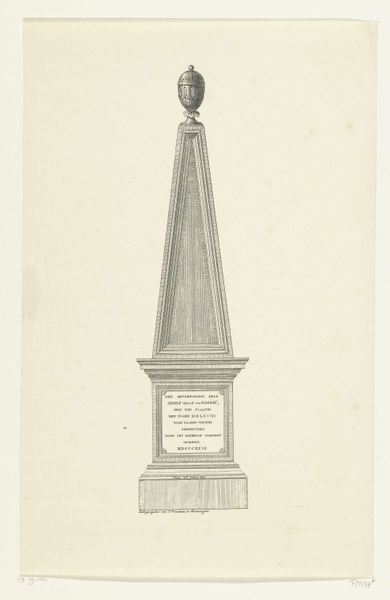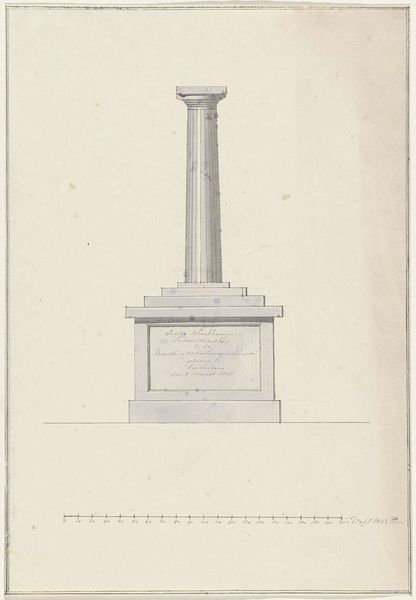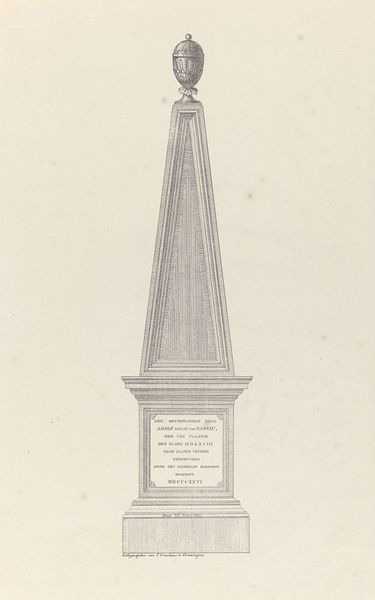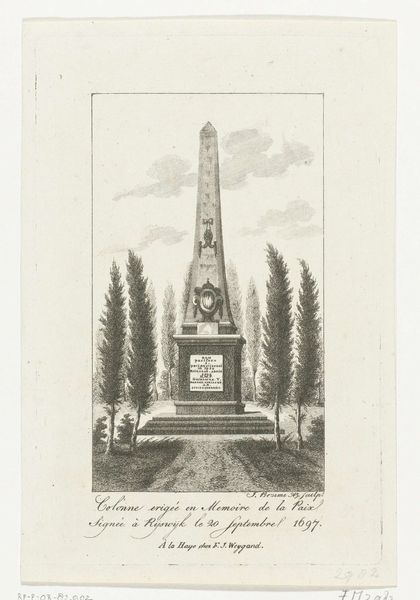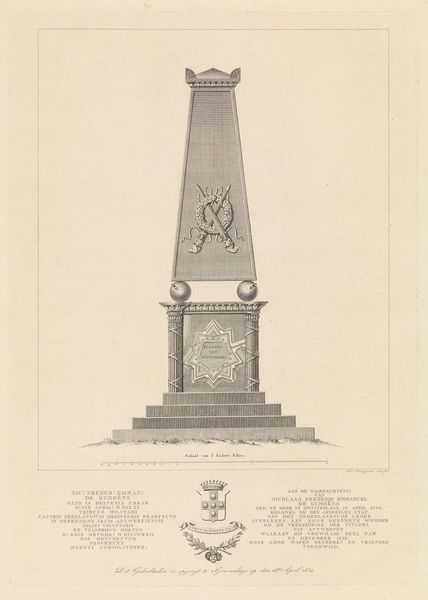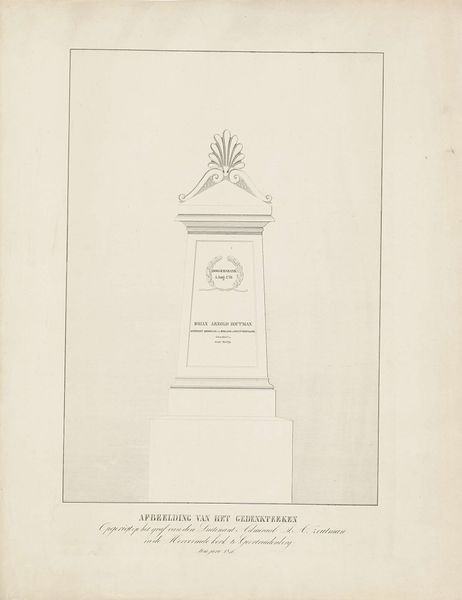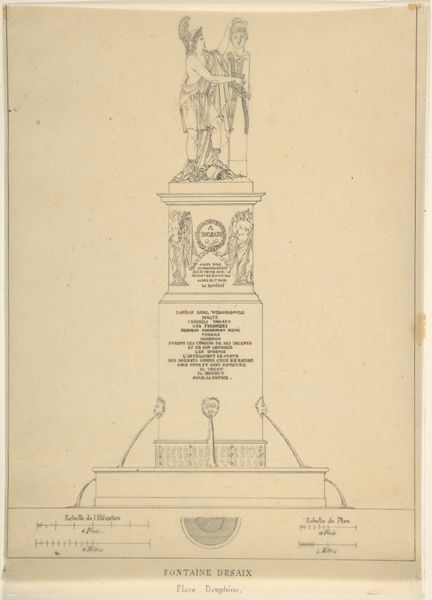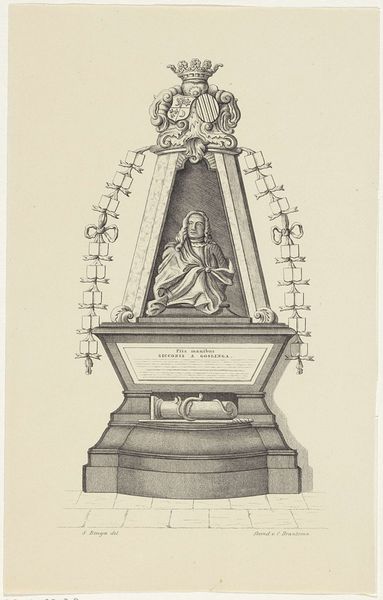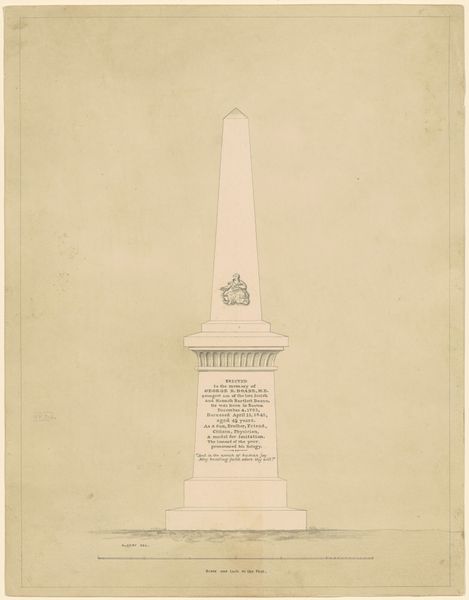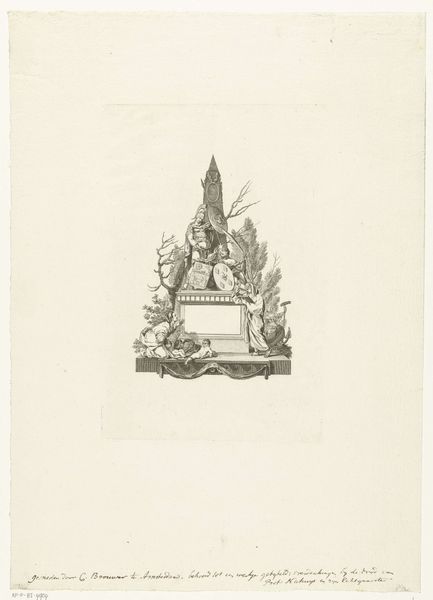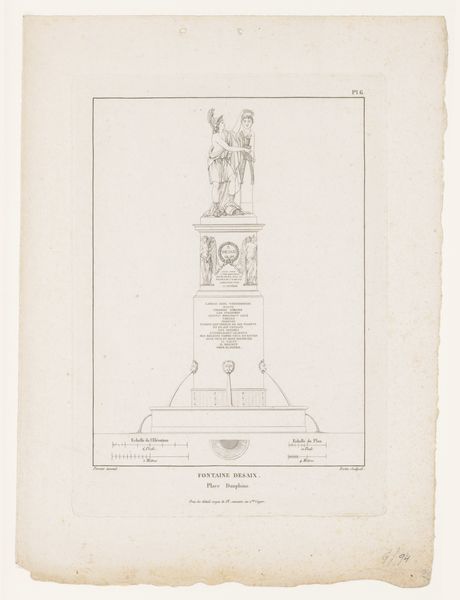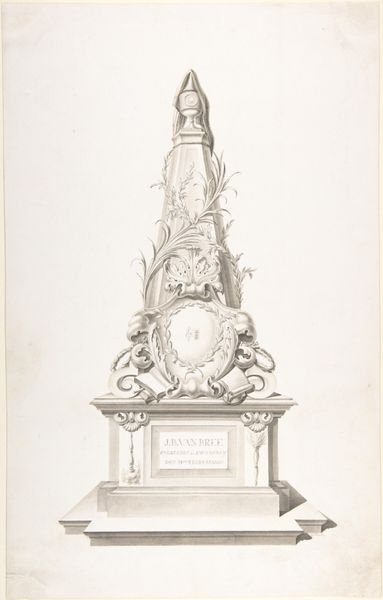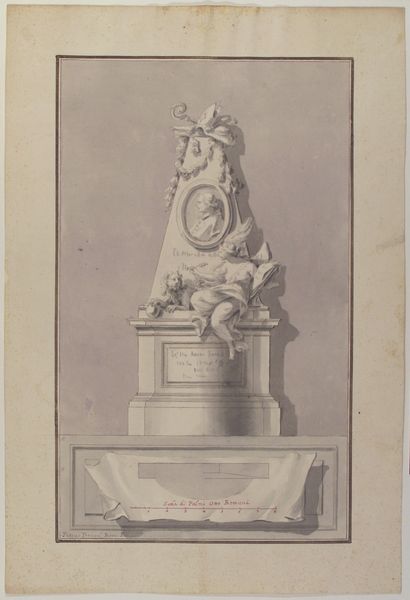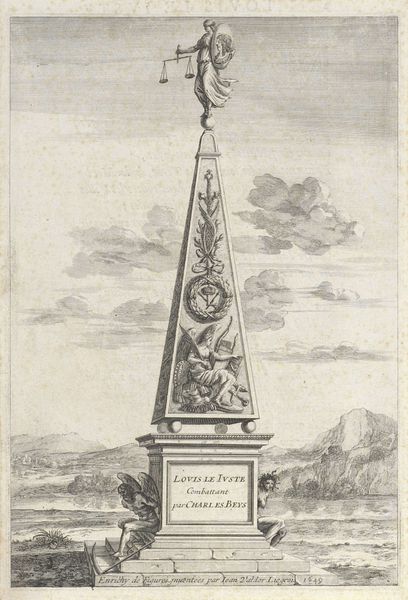
print, engraving
#
portrait
#
neoclacissism
# print
#
form
#
line
#
history-painting
#
engraving
Dimensions: height 377 mm, width 253 mm
Copyright: Rijks Museum: Open Domain
Curator: This engraving, titled "Gedenkzuil voor Jean Luzac, 1807", presents a memorial obelisk rendered with incredible detail. It was created in 1807. What's your immediate take on this piece? Editor: It's austere. There is something somber and weighty in the line work, and also its focus, front and center, on memorial. Curator: It is a tribute, precisely. Jean Luzac was a significant figure—a publisher and professor known for his anti-establishment views, especially against Napoleon. Luzac defended press freedom at a time when it was particularly threatened. The form itself, this Neoclassical obelisk, carries symbolic weight, wouldn't you agree? Editor: Absolutely. The printmaking process would have been itself quite labor-intensive, requiring meticulous handwork. Given its role as a monument for Luzac, it acts almost as a material testament to Enlightenment ideals – their defense required tremendous dedication. And who do you think would consume these? Were they widely circulated? Curator: The distribution probably was limited to intellectual circles who would champion those very ideals. I find it telling how the print's clean lines are indicative of Neoclassical style. The memorial features not only Luzac's portrait, wreathed in laurel, but also symbolic elements like crossed quills representing his literary contributions, don’t you think? They emphasize a dedication to production in service of an ideal. Editor: Indeed. There’s something almost… industrial, in a way, about reducing human contribution to reproducible iconography, even if he fought against repression and the crushing of ideals. Considering Luzac’s principles, the format makes me wonder about accessibility and modes of wider communication beyond elite circles. Curator: It points towards the paradoxes inherent in disseminating radical ideas within systems upholding those power dynamics. What is worth noting, though, is that the medium, being an engraving, makes the memory tangible. It’s more than a fleeting mention; it’s a deliberate construction meant to last. Editor: Well, it is clear the social context informs how we consider and contend with an artwork that stands firmly on a belief. The method and material by which the memorial becomes realized gives pause for thought. Curator: It is certainly worth further pondering, given the layers of meanings and tensions within its composition.
Comments
No comments
Be the first to comment and join the conversation on the ultimate creative platform.
